
Willows, also called sallows and osiers, of the genus Salix, comprise around 350 species of typically deciduous trees and shrubs, found primarily on moist soils in cold and temperate regions.

Anacampsis is a worldwide genus of moth with most found in the nearctic and neotropical regions. It is in the family Gelechiidae. The larvae feed on a range of deciduous trees and shrubs in a rolled or folded leaf, or spun shoot.

Anacampsis populella is a moth of the family Gelechiidae, which is native to Europe and has been accidentally introduced to North America. It was first described in 1759 by Carl Alexander Clerck, a Swedish entomologist. The type specimen is from Sweden. The foodplants of the larvae are poplars and willows.
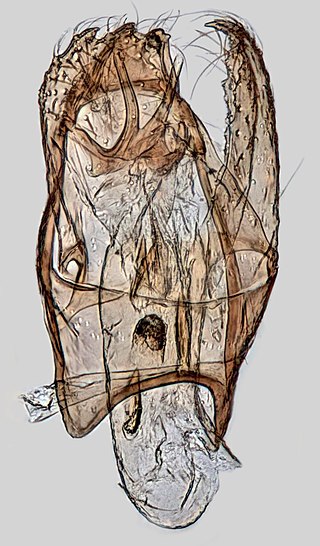
Stigmella obliquella is a moth of the family Nepticulidae which feeds on willow and can be found in Asia and Europe. It was first described by Hermann von Heinemann in 1862.

Phyllonorycter strigulatella is a moth of the family Gracillariidae. It is found in the most of Europe, east to Russia and Japan.

Phyllonorycter pastorella is a moth of the family Gracillariidae. It is known from all of Europe, east to Russia, China and Japan.
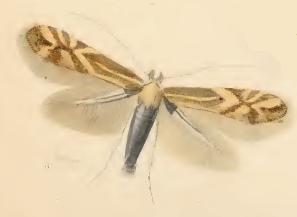
Phyllonorycter salictella is a moth of the family Gracillariidae. It is known from all of Europe, east to Russia and Japan.

Phyllocnistis saligna is a moth of the family Gracillariidae. It is known from almost all Europe, as well as India, Sri Lanka, La Réunion and South Africa.
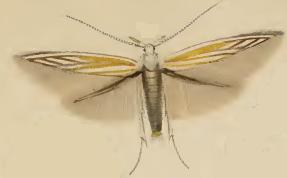
Coleophora currucipennella is a moth of the family Coleophoridae found in Europe. It was first described by Philipp Christoph Zeller in 1839.

Agonopterix conterminella is a moth of the family Depressariidae which is found in Asia, Europe and North America. It was described by Philipp Christoph Zeller in 1839 from a specimen found in Augsburg, Germany. The larvae feed on the terminal shoots of willows.
Udea inquinatalis is a species of moth in the family Crambidae. The species was first described by Friederike Lienig and Philipp Christoph Zeller in 1846. It is found in most of Europe and North America.
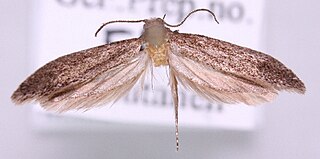
Elatobia fuliginosella is a moth of the family Tineidae. It was described by Friederike Lienig and Philipp Christoph Zeller in 1846. It is found in almost all of Europe, except Ireland, Great Britain, Portugal, the Benelux, Denmark and parts of the Balkan Peninsula, eastwards up to European Russia; in North Africa known from Morocco and Tunisia, eastwards through Siberia up to Mongolia.
Anacampsis innocuella, the dark-headed aspen leafroller moth, is a moth of the family Gelechiidae. It was described by Philipp Christoph Zeller in 1873. It is found in North America, where it has been recorded from Alabama, British Columbia, Illinois, Indiana, Maine, Mississippi, New York, Nova Scotia, Ohio, Oklahoma, Ontario, Quebec and Vermont.
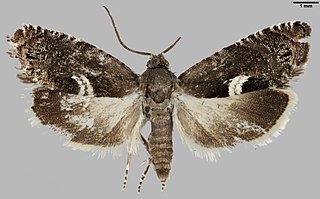
Cydia leguminana is a moth belonging to the family Tortricidae. The species was first described by Friederike Lienig and Philipp Christoph Zeller in 1846.

Pammene ochsenheimeriana is a moth belonging to the family Tortricidae. The species was first described by Friederike Lienig and Philipp Christoph Zeller in 1846.










